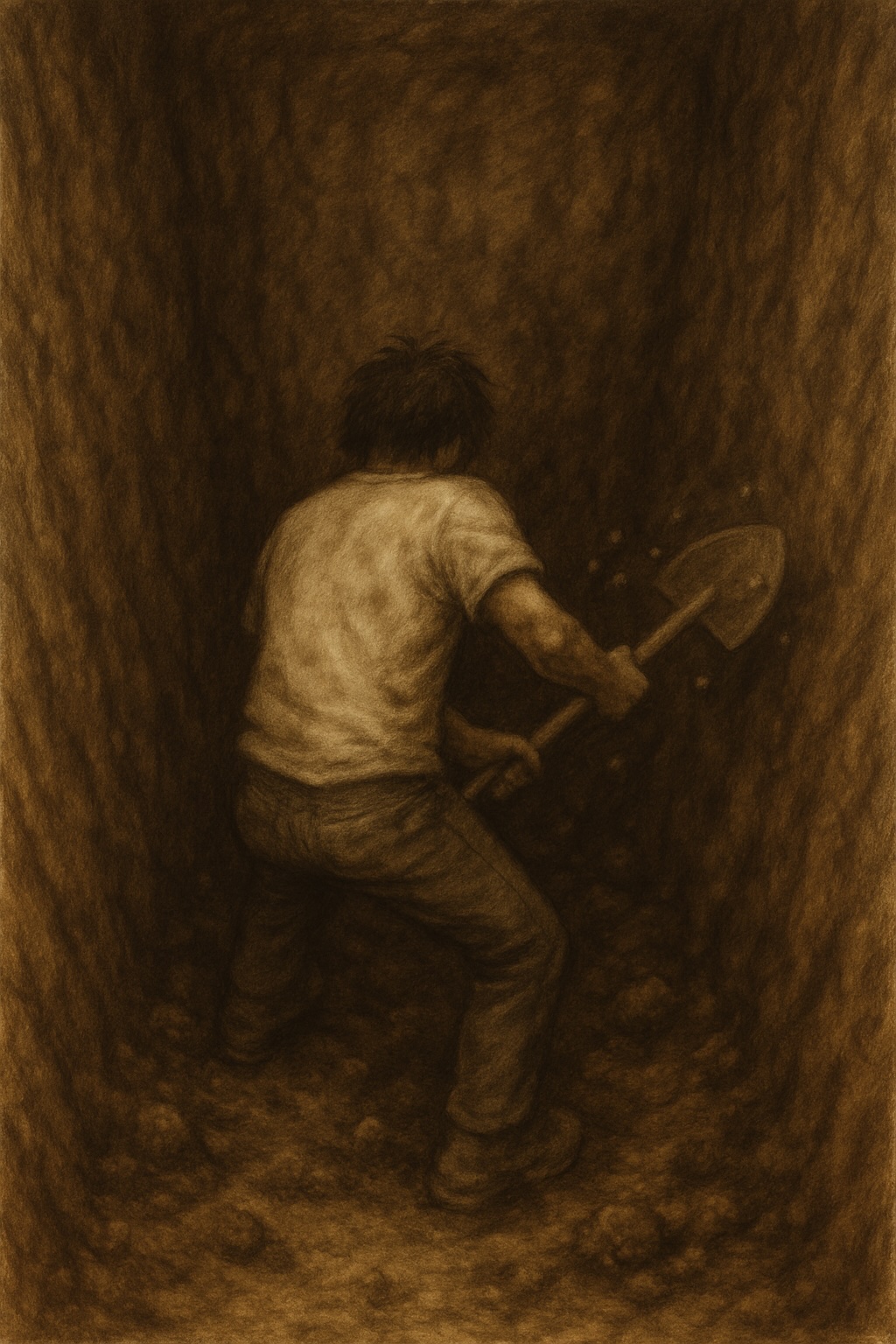Introduction
Acceptance and Commitment Therapy (ACT) is an evidence-based psychological approach that emphasizes acceptance of thoughts and feelings, mindfulness of the present moment, and commitment to values-based living. While some Catholics with OCD may feel hesitant about therapies that appear secular, ACT metaphors can be harmonized with Catholic teaching when understood correctly.
The following are 3 metaphors that may be particularly helpful in working with OCD:
1. Tug of War with a Giant
2. Digging Yourself Out of a Hole
3. Getting Trapped in Quicksand
Each metaphor highlights the futility of compulsions and the value of acceptance, providing a powerful tool for therapy.
Tug of War with a Giant

In this metaphor, the individual is asked to imagine being in a tug of war with a giant monster, with a pit of doom between them. The harder the individual pulls, the harder the monster pulls. The only way to win is not to pull harder and drop the rope.
For individuals diagnosed with OCD, compulsions can feel like pulling the rope and trying to defeat anxiety by force. Unfortunately, the more the individual engages, the stronger OCD becomes. Dropping the rope means refusing to perform the compulsion and allowing anxiety to fade on its own.
The metaphor parallels the teaching of surrender to God’s will. After all, as St. Paul wrote to the people of Corinth, “when I am weak, then I am strong” (2 Corinthians 12:10, NAB). Dropping the rope is an act of trust and strength—not defeat.
Digging Yourself Out of a Hole

In this metaphor, the individual is asked to imagine falling into a hole with a shovel. Digging feels like doing something useful but in reality it makes the hole deeper and the problem more severe. This metaphor does a good job of describing the futility of using compulsions to escape distress associated with OCD. Thus, engaging in compulsions may feel like a solution but it actually only worsens the problem.
Biblically, the parable of the prodigal son (Luke 15:11–32) illustrates this dynamic. In the parable, the son tries to resolve his life by his own efforts but sinks deeper and deeper into a sad state of affairs. True freedom comes when he stops ‘digging’ and returns to the Father—trusting in the Father’s love and mercy.
Getting Trapped in Quicksand

In this metaphor, the individual is asked to imagine walking unknowingly into quicksand and starting to sink in it. Moving faster and struggling against the quicksand feels like something necessary but in reality it only serves to make the person sink even faster. The only way out is to stop fighting and lie flat—spreading ones weight out as equally as possible so the sand supports you. In the case of OCD a similar dynamic plays out. Fighting intrusive thoughts directly makes them worse, while acceptance allows distress to subside.
Theologically, this paradox resembles the spiritual teaching of trusting Divine Providence. The believer stops resisting anxiety, accepts it as a reality that is present, and trusts in God’s mercy, which sustains them.
Possible Clinical Applications
These metaphors can be used in therapy sessions to help patients visualize the futility of compulsions. Patients can be asked, “What would dropping the rope in the tug of war scenario look like in your prayer life?” or “What compulsions are you using like a shovel that makes the hole deeper?” or “How can you trust what might seem counterintuitive when getting swallowed up by quicksand?” By combining metaphor with Catholic faith, patients learn that surrender is not passivity but active trust in God.
Conclusion
ACT metaphors, such as tug of war, digging oneself out of a hole, and getting trapped in quicksand provide vivid illustrations of very real and debilitating OCD dynamics. They harmonize with Catholic spirituality when framed as acts of trust in God. These stand in contrast to perhaps understandable but ultimately unhealthy and excessive self-reliance, emotional reactivity, and futile attempts to avoid experiences that are potentially unavoidable. By remembering these metaphors, individuals with OCD can skillfully respond to compulsions and live more freely in Christ.
References/Further Reading
Abramowitz, J. S., & Jacoby, R. J. (2015). Scrupulosity: A cognitive–behavioral analysis and implications for treatment. Journal of Obsessive-Compulsive and Related Disorders, 5, 56–64.
Hayes, S. C., Strosahl, K. D., & Wilson, K. G. (2011). Acceptance and commitment therapy: The process and practice of mindful change. Guilford Press.
New American Bible. (2011). United States Conference of Catholic Bishops.
